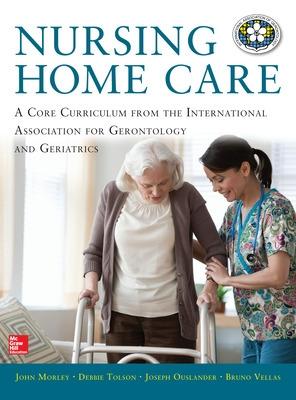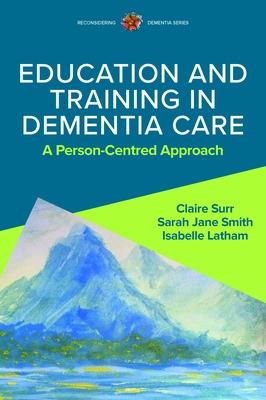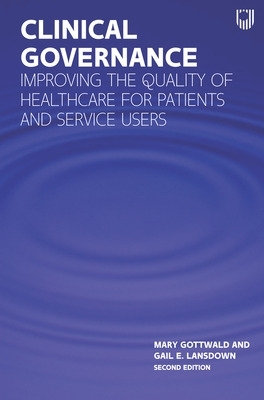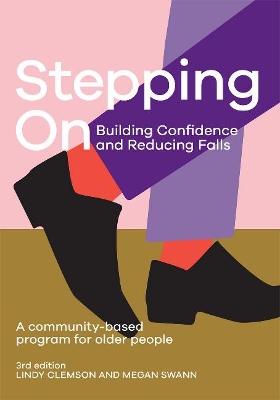Nursing Home Care
 portes grátis
portes grátis
Nursing Home Care
Vellas, Bruno; Morley, John; Tolson, Debbie; Ouslander, Joseph
McGraw-Hill Education - Europe
07/2013
336
Dura
Inglês
9780071807654
15 a 20 dias
1066
Descrição não disponível.
Part 1 Introduction to Nursing Home Life & Alternatives
My Experience of Nursing Homes: Voice of the Resident
Our Experience of Nursing Homes: Voices of Family and Friends
Working in a Nursing Home
Career choices and ambition
Preparation to practice in a nursing home
Creating a place called home
Rules and regulations
Diversity of Nursing Homes and long term care around the World
Nursing home practitioners-contributing disciplines, essential knowledge, skills and caring attributes
International NH Development & Research Agenda IAGG-WHO
Culture and Quality of Care
Nursing Home Design
Aging in Place: Other Approaches to Long Term Care
Part 2 Fundamentals of Nursing Home Practice
History of Nursing Homes Around the World
Principles of Nursing Home Care
Fundamental Rights & Ethical Considerations
Truth telling and information disclosure-dilemmas and solutions
From admission to end of life care
Shared decision making
Risks and safety-including medication administration and review (polypharmacy)
Restraint Free Environments
Core values
Protecting the vulnerable -elder abuse and unintentional neglect
Accidents happen-and what to do when they occur
Models of Care
Patient centered care
Transitions
Subacute care
Improving function
End of life/hospice care
Eden Alternative
Technology and care
Multi-Professional Teams: Working Together
An integrated model: a blend of clinical, nursing and social care
Inter professional communication
Valuing nursing home practitioners, assistant practitioners
Building a strong team based on reciprocity
Family involvement
Keeping the records in order
Nursing Home Leadership
Role of the administrator
Role of doctors and the medical director
Role of nurses and the nursing director
The wider multiprofessional team
Quality Improvement
Role of regulators and accreditation agencies
Governance and national standards
Preparing for the inspector
Role of Lay Assessors & Resident Advocates
Managing budgets and balancing the books
Keeping up to date with evidence
Part 3 Admission to a Nursing Home
Preparing for admission.-what individuals and families need to know
Types of admission & admission criteria.
Knowing the person and biographical histories
Minimum Data Sets
Assessment of clinical need & medications.
Assessment of frailty status and functional abilities.
Assessment of communication needs-enabling communication
Understanding preferences and personal priorities
Care Paradigms-enabling/rehabilitation/maintenance/palliative/end of life
Part 4 Managing Age Related Syndromes and Changes
Aches and Pains
Pain and function
Assessing pain
Pain management
Toolkits for Practice -what you will see, what you should say-what you should do
Toolkits for Practice- knowing when specialist referral is indicated
Low Mood, Anxiety and Depression
Adjustment to a nursing home
Dysphoria
Depression
Anxiety
Psychotic disorders
Toolkits for Practice -what you will see, what you should say-what you should do
Toolkits for Practice- knowing when specialist referral is indicated
Confusion, Agitation and Other Behavioral Disturbance
Delirium
Dementia - Causes
Dementia - Management
Wandering
Screaming
Sundowners- twilight agitation
Behavioral Disturbances
Toolkits for Practice -what you will see, what you should say-what you should do
Toolkits for Practice- knowing when specialist referral is indicated
Eating and Drinking
Nutritional screening and assessment
Managing weight loss
Therapeutic diets
Vitamin D and other vitamins and minerals
Choosing suitable food and drink
Meal times and snack provision
Special considerations for frail older people
Toolkits for Practice -what you will see, what you should say-what you should do
Urinary Continence
Managing Transient Functional Incontinence
Preventing urinary tract infections and catheter associated infections
Stress and Urge Incontinence
Overflow Incontinence
Lower Urinary Tract Infection
Achieving Continence and Social Continence- the does and don'ts of catheterization, pads and cleansers
Toolkits for Practice -what you will see, what you should say-what you should do
Toolkits for Practice-knowing when specialist referral is indicated
Bowel Changes
Managing constipation
Understanding and Managing fecal incontinence
Diarrhea
Hemorrhoids
Toolkits for Practice -what you will see, what you should say-what you should do
Toolkits for Practice- knowing when specialist referral is indicated
Mobility and Falls Prevention
Walking, health and survival
Gait disturbances
Falls - Causes
Falls - Prevention
Hip fractures
Sleep Disturbance
Insomnia
Nocturia
Sleep apnea
Restless legs
Nightmares
Ulcers and Common Skin Disorders
Pressure Ulcers
Vascular ulcers
Skin disorders
Stomal care
Oral Health
Care of mouth and teeth/dentures
Xerostomia-Dry Mouth-Causes and Interventions
Common fungal infections-Causes and Prevention
Other problems related to oral mucosa-cancer
Swallowing difficulties
Toolkits for Practice -what you will see, what you should say-what you should do
Toolkits for practice-knowing when specialist referral is indicated
Vision and Hearing
Age related hearing loss
Simple tests for hearing and audiometry
Hearing Aids
Ear Care & Wax
Tinnitus
Age related vision loss
Simple tests of visual acuity
Dry Eye
Common diseases of the ageing eye
Toolkits for Practice -what you will see, what you should say-what you should do
Toolkits for practice-knowing when specialist referral is indicated
Part 5 Disease Management
Hypertension, Hypotension and Heart Failure
Neurological Disorders--Stroke, Parkinson's disease, Multiple Sclerosis, Locked-in Syndrome
Musculoskeletal Disorders--Arthritis, Osteoarthritis, Contractures
Infections and Their Control
Anemia
Endocrine Disorders
Gastrointestinal Disorders
Pulmonary Disorders
Cancer
My Experience of Nursing Homes: Voice of the Resident
Our Experience of Nursing Homes: Voices of Family and Friends
Working in a Nursing Home
Career choices and ambition
Preparation to practice in a nursing home
Creating a place called home
Rules and regulations
Diversity of Nursing Homes and long term care around the World
Nursing home practitioners-contributing disciplines, essential knowledge, skills and caring attributes
International NH Development & Research Agenda IAGG-WHO
Culture and Quality of Care
Nursing Home Design
Aging in Place: Other Approaches to Long Term Care
Part 2 Fundamentals of Nursing Home Practice
History of Nursing Homes Around the World
Principles of Nursing Home Care
Fundamental Rights & Ethical Considerations
Truth telling and information disclosure-dilemmas and solutions
From admission to end of life care
Shared decision making
Risks and safety-including medication administration and review (polypharmacy)
Restraint Free Environments
Core values
Protecting the vulnerable -elder abuse and unintentional neglect
Accidents happen-and what to do when they occur
Models of Care
Patient centered care
Transitions
Subacute care
Improving function
End of life/hospice care
Eden Alternative
Technology and care
Multi-Professional Teams: Working Together
An integrated model: a blend of clinical, nursing and social care
Inter professional communication
Valuing nursing home practitioners, assistant practitioners
Building a strong team based on reciprocity
Family involvement
Keeping the records in order
Nursing Home Leadership
Role of the administrator
Role of doctors and the medical director
Role of nurses and the nursing director
The wider multiprofessional team
Quality Improvement
Role of regulators and accreditation agencies
Governance and national standards
Preparing for the inspector
Role of Lay Assessors & Resident Advocates
Managing budgets and balancing the books
Keeping up to date with evidence
Part 3 Admission to a Nursing Home
Preparing for admission.-what individuals and families need to know
Types of admission & admission criteria.
Knowing the person and biographical histories
Minimum Data Sets
Assessment of clinical need & medications.
Assessment of frailty status and functional abilities.
Assessment of communication needs-enabling communication
Understanding preferences and personal priorities
Care Paradigms-enabling/rehabilitation/maintenance/palliative/end of life
Part 4 Managing Age Related Syndromes and Changes
Aches and Pains
Pain and function
Assessing pain
Pain management
Toolkits for Practice -what you will see, what you should say-what you should do
Toolkits for Practice- knowing when specialist referral is indicated
Low Mood, Anxiety and Depression
Adjustment to a nursing home
Dysphoria
Depression
Anxiety
Psychotic disorders
Toolkits for Practice -what you will see, what you should say-what you should do
Toolkits for Practice- knowing when specialist referral is indicated
Confusion, Agitation and Other Behavioral Disturbance
Delirium
Dementia - Causes
Dementia - Management
Wandering
Screaming
Sundowners- twilight agitation
Behavioral Disturbances
Toolkits for Practice -what you will see, what you should say-what you should do
Toolkits for Practice- knowing when specialist referral is indicated
Eating and Drinking
Nutritional screening and assessment
Managing weight loss
Therapeutic diets
Vitamin D and other vitamins and minerals
Choosing suitable food and drink
Meal times and snack provision
Special considerations for frail older people
Toolkits for Practice -what you will see, what you should say-what you should do
Urinary Continence
Managing Transient Functional Incontinence
Preventing urinary tract infections and catheter associated infections
Stress and Urge Incontinence
Overflow Incontinence
Lower Urinary Tract Infection
Achieving Continence and Social Continence- the does and don'ts of catheterization, pads and cleansers
Toolkits for Practice -what you will see, what you should say-what you should do
Toolkits for Practice-knowing when specialist referral is indicated
Bowel Changes
Managing constipation
Understanding and Managing fecal incontinence
Diarrhea
Hemorrhoids
Toolkits for Practice -what you will see, what you should say-what you should do
Toolkits for Practice- knowing when specialist referral is indicated
Mobility and Falls Prevention
Walking, health and survival
Gait disturbances
Falls - Causes
Falls - Prevention
Hip fractures
Sleep Disturbance
Insomnia
Nocturia
Sleep apnea
Restless legs
Nightmares
Ulcers and Common Skin Disorders
Pressure Ulcers
Vascular ulcers
Skin disorders
Stomal care
Oral Health
Care of mouth and teeth/dentures
Xerostomia-Dry Mouth-Causes and Interventions
Common fungal infections-Causes and Prevention
Other problems related to oral mucosa-cancer
Swallowing difficulties
Toolkits for Practice -what you will see, what you should say-what you should do
Toolkits for practice-knowing when specialist referral is indicated
Vision and Hearing
Age related hearing loss
Simple tests for hearing and audiometry
Hearing Aids
Ear Care & Wax
Tinnitus
Age related vision loss
Simple tests of visual acuity
Dry Eye
Common diseases of the ageing eye
Toolkits for Practice -what you will see, what you should say-what you should do
Toolkits for practice-knowing when specialist referral is indicated
Part 5 Disease Management
Hypertension, Hypotension and Heart Failure
Neurological Disorders--Stroke, Parkinson's disease, Multiple Sclerosis, Locked-in Syndrome
Musculoskeletal Disorders--Arthritis, Osteoarthritis, Contractures
Infections and Their Control
Anemia
Endocrine Disorders
Gastrointestinal Disorders
Pulmonary Disorders
Cancer
Este título pertence ao(s) assunto(s) indicados(s). Para ver outros títulos clique no assunto desejado.
Introduction to Nursing Home Life & Alternatives, My Experience of Nursing Homes, Working in a Nursing Home, Preparation to practice in a nursing home, Rules and regulations in nursing homes, Diversity of Nursing Homes and long term care around the World, Nursing home practitioners-contributing disciplines, Nursing Home Design, Approaches to Long Term Care, Fundamentals of Nursing Home Practice, History of Nursing Homes Around the World, Principles of Nursing Home Care, Restraint Free Environments, Core values, elder abuse and unintentional neglect, Models of nursing home Care, Patient centered nursing home care, End of life/hospice care, Technology and nursing home care, Keeping the records in order at nursing homes, Nursing Home Leadership, Role of the administrator in nursing homes, Role of doctors and the medical director in nursing homes, Role of nurses and the nursing director in nursing homes, Admission to a Nursing Home
Part 1 Introduction to Nursing Home Life & Alternatives
My Experience of Nursing Homes: Voice of the Resident
Our Experience of Nursing Homes: Voices of Family and Friends
Working in a Nursing Home
Career choices and ambition
Preparation to practice in a nursing home
Creating a place called home
Rules and regulations
Diversity of Nursing Homes and long term care around the World
Nursing home practitioners-contributing disciplines, essential knowledge, skills and caring attributes
International NH Development & Research Agenda IAGG-WHO
Culture and Quality of Care
Nursing Home Design
Aging in Place: Other Approaches to Long Term Care
Part 2 Fundamentals of Nursing Home Practice
History of Nursing Homes Around the World
Principles of Nursing Home Care
Fundamental Rights & Ethical Considerations
Truth telling and information disclosure-dilemmas and solutions
From admission to end of life care
Shared decision making
Risks and safety-including medication administration and review (polypharmacy)
Restraint Free Environments
Core values
Protecting the vulnerable -elder abuse and unintentional neglect
Accidents happen-and what to do when they occur
Models of Care
Patient centered care
Transitions
Subacute care
Improving function
End of life/hospice care
Eden Alternative
Technology and care
Multi-Professional Teams: Working Together
An integrated model: a blend of clinical, nursing and social care
Inter professional communication
Valuing nursing home practitioners, assistant practitioners
Building a strong team based on reciprocity
Family involvement
Keeping the records in order
Nursing Home Leadership
Role of the administrator
Role of doctors and the medical director
Role of nurses and the nursing director
The wider multiprofessional team
Quality Improvement
Role of regulators and accreditation agencies
Governance and national standards
Preparing for the inspector
Role of Lay Assessors & Resident Advocates
Managing budgets and balancing the books
Keeping up to date with evidence
Part 3 Admission to a Nursing Home
Preparing for admission.-what individuals and families need to know
Types of admission & admission criteria.
Knowing the person and biographical histories
Minimum Data Sets
Assessment of clinical need & medications.
Assessment of frailty status and functional abilities.
Assessment of communication needs-enabling communication
Understanding preferences and personal priorities
Care Paradigms-enabling/rehabilitation/maintenance/palliative/end of life
Part 4 Managing Age Related Syndromes and Changes
Aches and Pains
Pain and function
Assessing pain
Pain management
Toolkits for Practice -what you will see, what you should say-what you should do
Toolkits for Practice- knowing when specialist referral is indicated
Low Mood, Anxiety and Depression
Adjustment to a nursing home
Dysphoria
Depression
Anxiety
Psychotic disorders
Toolkits for Practice -what you will see, what you should say-what you should do
Toolkits for Practice- knowing when specialist referral is indicated
Confusion, Agitation and Other Behavioral Disturbance
Delirium
Dementia - Causes
Dementia - Management
Wandering
Screaming
Sundowners- twilight agitation
Behavioral Disturbances
Toolkits for Practice -what you will see, what you should say-what you should do
Toolkits for Practice- knowing when specialist referral is indicated
Eating and Drinking
Nutritional screening and assessment
Managing weight loss
Therapeutic diets
Vitamin D and other vitamins and minerals
Choosing suitable food and drink
Meal times and snack provision
Special considerations for frail older people
Toolkits for Practice -what you will see, what you should say-what you should do
Urinary Continence
Managing Transient Functional Incontinence
Preventing urinary tract infections and catheter associated infections
Stress and Urge Incontinence
Overflow Incontinence
Lower Urinary Tract Infection
Achieving Continence and Social Continence- the does and don'ts of catheterization, pads and cleansers
Toolkits for Practice -what you will see, what you should say-what you should do
Toolkits for Practice-knowing when specialist referral is indicated
Bowel Changes
Managing constipation
Understanding and Managing fecal incontinence
Diarrhea
Hemorrhoids
Toolkits for Practice -what you will see, what you should say-what you should do
Toolkits for Practice- knowing when specialist referral is indicated
Mobility and Falls Prevention
Walking, health and survival
Gait disturbances
Falls - Causes
Falls - Prevention
Hip fractures
Sleep Disturbance
Insomnia
Nocturia
Sleep apnea
Restless legs
Nightmares
Ulcers and Common Skin Disorders
Pressure Ulcers
Vascular ulcers
Skin disorders
Stomal care
Oral Health
Care of mouth and teeth/dentures
Xerostomia-Dry Mouth-Causes and Interventions
Common fungal infections-Causes and Prevention
Other problems related to oral mucosa-cancer
Swallowing difficulties
Toolkits for Practice -what you will see, what you should say-what you should do
Toolkits for practice-knowing when specialist referral is indicated
Vision and Hearing
Age related hearing loss
Simple tests for hearing and audiometry
Hearing Aids
Ear Care & Wax
Tinnitus
Age related vision loss
Simple tests of visual acuity
Dry Eye
Common diseases of the ageing eye
Toolkits for Practice -what you will see, what you should say-what you should do
Toolkits for practice-knowing when specialist referral is indicated
Part 5 Disease Management
Hypertension, Hypotension and Heart Failure
Neurological Disorders--Stroke, Parkinson's disease, Multiple Sclerosis, Locked-in Syndrome
Musculoskeletal Disorders--Arthritis, Osteoarthritis, Contractures
Infections and Their Control
Anemia
Endocrine Disorders
Gastrointestinal Disorders
Pulmonary Disorders
Cancer
My Experience of Nursing Homes: Voice of the Resident
Our Experience of Nursing Homes: Voices of Family and Friends
Working in a Nursing Home
Career choices and ambition
Preparation to practice in a nursing home
Creating a place called home
Rules and regulations
Diversity of Nursing Homes and long term care around the World
Nursing home practitioners-contributing disciplines, essential knowledge, skills and caring attributes
International NH Development & Research Agenda IAGG-WHO
Culture and Quality of Care
Nursing Home Design
Aging in Place: Other Approaches to Long Term Care
Part 2 Fundamentals of Nursing Home Practice
History of Nursing Homes Around the World
Principles of Nursing Home Care
Fundamental Rights & Ethical Considerations
Truth telling and information disclosure-dilemmas and solutions
From admission to end of life care
Shared decision making
Risks and safety-including medication administration and review (polypharmacy)
Restraint Free Environments
Core values
Protecting the vulnerable -elder abuse and unintentional neglect
Accidents happen-and what to do when they occur
Models of Care
Patient centered care
Transitions
Subacute care
Improving function
End of life/hospice care
Eden Alternative
Technology and care
Multi-Professional Teams: Working Together
An integrated model: a blend of clinical, nursing and social care
Inter professional communication
Valuing nursing home practitioners, assistant practitioners
Building a strong team based on reciprocity
Family involvement
Keeping the records in order
Nursing Home Leadership
Role of the administrator
Role of doctors and the medical director
Role of nurses and the nursing director
The wider multiprofessional team
Quality Improvement
Role of regulators and accreditation agencies
Governance and national standards
Preparing for the inspector
Role of Lay Assessors & Resident Advocates
Managing budgets and balancing the books
Keeping up to date with evidence
Part 3 Admission to a Nursing Home
Preparing for admission.-what individuals and families need to know
Types of admission & admission criteria.
Knowing the person and biographical histories
Minimum Data Sets
Assessment of clinical need & medications.
Assessment of frailty status and functional abilities.
Assessment of communication needs-enabling communication
Understanding preferences and personal priorities
Care Paradigms-enabling/rehabilitation/maintenance/palliative/end of life
Part 4 Managing Age Related Syndromes and Changes
Aches and Pains
Pain and function
Assessing pain
Pain management
Toolkits for Practice -what you will see, what you should say-what you should do
Toolkits for Practice- knowing when specialist referral is indicated
Low Mood, Anxiety and Depression
Adjustment to a nursing home
Dysphoria
Depression
Anxiety
Psychotic disorders
Toolkits for Practice -what you will see, what you should say-what you should do
Toolkits for Practice- knowing when specialist referral is indicated
Confusion, Agitation and Other Behavioral Disturbance
Delirium
Dementia - Causes
Dementia - Management
Wandering
Screaming
Sundowners- twilight agitation
Behavioral Disturbances
Toolkits for Practice -what you will see, what you should say-what you should do
Toolkits for Practice- knowing when specialist referral is indicated
Eating and Drinking
Nutritional screening and assessment
Managing weight loss
Therapeutic diets
Vitamin D and other vitamins and minerals
Choosing suitable food and drink
Meal times and snack provision
Special considerations for frail older people
Toolkits for Practice -what you will see, what you should say-what you should do
Urinary Continence
Managing Transient Functional Incontinence
Preventing urinary tract infections and catheter associated infections
Stress and Urge Incontinence
Overflow Incontinence
Lower Urinary Tract Infection
Achieving Continence and Social Continence- the does and don'ts of catheterization, pads and cleansers
Toolkits for Practice -what you will see, what you should say-what you should do
Toolkits for Practice-knowing when specialist referral is indicated
Bowel Changes
Managing constipation
Understanding and Managing fecal incontinence
Diarrhea
Hemorrhoids
Toolkits for Practice -what you will see, what you should say-what you should do
Toolkits for Practice- knowing when specialist referral is indicated
Mobility and Falls Prevention
Walking, health and survival
Gait disturbances
Falls - Causes
Falls - Prevention
Hip fractures
Sleep Disturbance
Insomnia
Nocturia
Sleep apnea
Restless legs
Nightmares
Ulcers and Common Skin Disorders
Pressure Ulcers
Vascular ulcers
Skin disorders
Stomal care
Oral Health
Care of mouth and teeth/dentures
Xerostomia-Dry Mouth-Causes and Interventions
Common fungal infections-Causes and Prevention
Other problems related to oral mucosa-cancer
Swallowing difficulties
Toolkits for Practice -what you will see, what you should say-what you should do
Toolkits for practice-knowing when specialist referral is indicated
Vision and Hearing
Age related hearing loss
Simple tests for hearing and audiometry
Hearing Aids
Ear Care & Wax
Tinnitus
Age related vision loss
Simple tests of visual acuity
Dry Eye
Common diseases of the ageing eye
Toolkits for Practice -what you will see, what you should say-what you should do
Toolkits for practice-knowing when specialist referral is indicated
Part 5 Disease Management
Hypertension, Hypotension and Heart Failure
Neurological Disorders--Stroke, Parkinson's disease, Multiple Sclerosis, Locked-in Syndrome
Musculoskeletal Disorders--Arthritis, Osteoarthritis, Contractures
Infections and Their Control
Anemia
Endocrine Disorders
Gastrointestinal Disorders
Pulmonary Disorders
Cancer
Este título pertence ao(s) assunto(s) indicados(s). Para ver outros títulos clique no assunto desejado.
Introduction to Nursing Home Life & Alternatives, My Experience of Nursing Homes, Working in a Nursing Home, Preparation to practice in a nursing home, Rules and regulations in nursing homes, Diversity of Nursing Homes and long term care around the World, Nursing home practitioners-contributing disciplines, Nursing Home Design, Approaches to Long Term Care, Fundamentals of Nursing Home Practice, History of Nursing Homes Around the World, Principles of Nursing Home Care, Restraint Free Environments, Core values, elder abuse and unintentional neglect, Models of nursing home Care, Patient centered nursing home care, End of life/hospice care, Technology and nursing home care, Keeping the records in order at nursing homes, Nursing Home Leadership, Role of the administrator in nursing homes, Role of doctors and the medical director in nursing homes, Role of nurses and the nursing director in nursing homes, Admission to a Nursing Home




